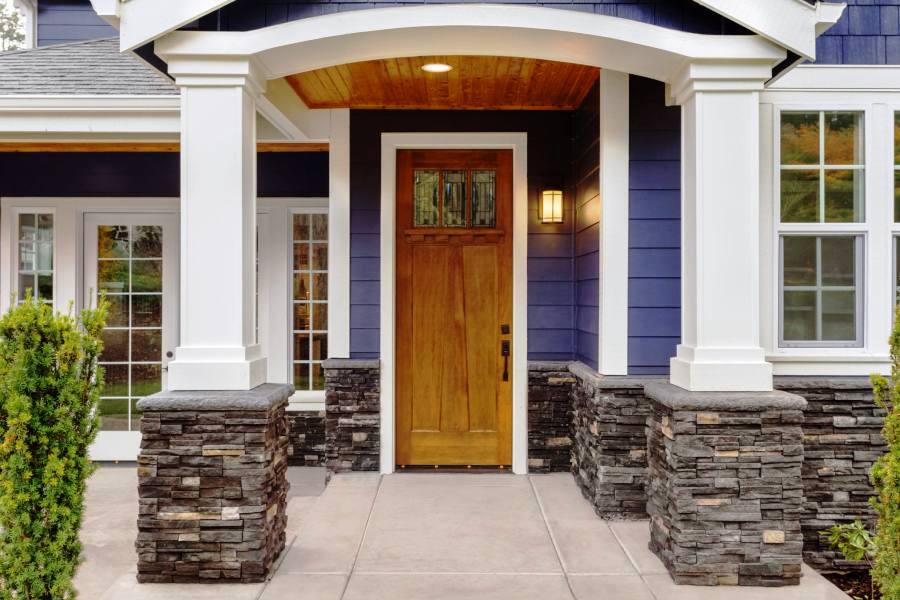Thinking about refinancing but don’t want to shell out thousands in upfront fees? A no-closing-cost refinance sounds like a win—but there’s more to it than meets the eye.

Instead of paying fees at the closing table, you’ll either accept a higher interest rate or roll the costs into your loan. It’s a smart option for some homeowners and a costly mistake for others.
In this guide, we’ll break down how no-closing-cost refinancing works, when it makes sense, and how to avoid the hidden traps lenders don’t always spell out.
Key Takeaways
- A no-closing-cost refinance lets you skip upfront fees, but the costs don’t disappear—they’re built into the loan through a higher interest rate.
- It can help if you’re short on cash, but you’ll likely pay more over time in interest and lose some home equity in the process.
- To qualify, you’ll need good credit, steady income, a low debt-to-income ratio, and a smart comparison of lender offers.
What Is a no-closing-cost refinance?
A no-closing-cost refinance lets you replace your current mortgage without paying thousands in upfront fees. Instead of covering closing costs like loan origination, appraisal, title, and escrow at closing, the lender pays them for you.
But those fees don’t disappear—they’re either added to your loan balance or built into a slightly higher interest rate. That means you’ll still pay them, just over time through your monthly payments. It can be a good option if you’re short on cash, but it may cost more in the long run.
How a No-Closing-Cost Refinance Works
The process works just like a standard refinance. You’ll apply with a refinance lender, share your financial documents, and go through a credit check. If you qualify, your new mortgage replaces your old one—without the typical upfront closing costs.
Instead of charging you out of pocket, the lender recoups those costs over time. Some will increase your loan amount to cover the fees. Others offer a lender credit in exchange for a higher interest rate. Either way, the fees get paid—but not at closing.
Pros and Cons of No Closing Costs
Skipping upfront closing costs sounds great—and for some homeowners, it is. But like any mortgage option, it comes with trade-offs. You’ll need to weigh the short-term savings against the long-term cost to decide if it’s the right move for your financial situation.
Here’s a clear breakdown of the benefits and drawbacks:
Pros
- Upfront savings – The biggest perk is avoiding thousands of dollars in closing costs at the time of refinance. This can be a game-changer if you don’t have the cash on hand or want to keep your savings intact for emergencies, investments, or home improvements.
- Easier to afford – By removing the hurdle of upfront fees, a no-closing-cost refinance can make refinancing more accessible. It’s a practical option if you’re tight on cash or dealing with other financial obligations.
- Faster break-even point (in some cases) – If you plan to move or refinance again within a few years, skipping upfront costs can help you break even faster. You won’t need to stay in the home as long to make the refinance worthwhile.
Cons
- Higher long-term cost – The biggest downside is the total cost over time. Whether the fees are added to your loan balance or you’re paying a higher mortgage rate, you’ll end up paying more in interest throughout the life of the loan.
- Bigger monthly payments – A higher interest rate or larger loan amount can raise your monthly mortgage payment. If your budget is already stretched, this could add financial pressure.
- Reduced home equity – When closing costs are rolled into the loan, your starting equity takes a hit. That matters if you plan to tap into your home’s value later—whether for a HELOC, home equity loan, or future sale.
Who qualifies for a no-closing-cost mortgage refinance?
The qualifications for a no-closing-cost refinance are pretty much the same as a standard refinance. Lenders will look closely at your credit score, income, and debt-to-income ratio to decide if you’re eligible.
To boost your chances of approval—and get better terms—aim for a strong credit score, steady income, and a low debt load. A history of on-time payments helps too. The more financially solid you look on paper, the more likely a lender is to offer competitive rates, even with the no-closing-cost structure.
Once you qualify, compare offers from multiple lenders. Look beyond the headline rate. Focus on the total cost of each option—including how much extra interest you’ll pay over time. A slightly lower rate from one lender could save you thousands compared to another that offers “no fees” but quietly adds them into a higher monthly payment.
How to Find Lenders That Offer No-Closing-Cost Refinancing
Not all lenders structure no-closing-cost refinances the same way—which is why shopping around is key. Rates, fees, and loan terms can vary widely, so take the time to compare your options and find the best deal for your situation.
Here are a few smart ways to start your search:
- Ask your current lender – Your existing mortgage lender may want to keep your business and could offer a competitive no-closing-cost refinance. Always see what they’re willing to offer before looking elsewhere.
- Use online comparison tools – Mortgage comparison sites let you view rates, loan terms, and estimated costs from multiple lenders in one place. These platforms make it easy to compare apples to apples.
- Check with local banks and credit unions – Smaller institutions sometimes offer better deals to local customers or members. Don’t overlook them—they may be more flexible than large banks.
- Talk to a mortgage broker – Mortgage brokers work with many lenders and can often find deals that aren’t advertised publicly. They’ll help you evaluate the true cost of each offer, not just the rate.
- Look into online lenders – Online-only mortgage lenders often have lower overhead, which can lead to lower rates or better terms. Just make sure to read reviews and check their customer service record before committing.
Don’t just go with the first lender that promises “no fees.” Compare rates, read the fine print, and run the numbers to make sure the long-term costs actually make sense.
What to Watch for in No-Closing-Cost Refinance Offers
Not all “no-closing-cost” deals are created equal. Some only cover lender fees, while others include third-party costs like title, escrow, and appraisal. Make sure you know exactly what’s included before you sign.
Ask your lender to break down the full cost structure. Are they rolling fees into the loan balance? Are you getting a lender credit in exchange for a higher interest rate? Get clear answers. Then compare that offer to others—because terms vary widely from lender to lender.
Pay close attention to these potential costs:
- Title and appraisal fees
- Lender fees and mortgage points
- Escrow and prepaid property taxes
- Home inspection and credit report fees
Even when you don’t pay these upfront, they don’t disappear—they’re just moved elsewhere. Transparency is everything.
Is a no-closing-cost refinance the right choice?
This type of refinance can be a smart move—but only in the right situation. If you’re planning to move or sell your home in the next few years, skipping upfront costs may help you save cash now and avoid paying for long-term interest you’ll never fully accrue.
But if you’re deep into a 30-year mortgage—or planning to stay in the home long term—the higher interest rate or larger loan balance could cost you more than you save. That extra expense can add up fast, especially in the second half of your loan term.
Before you decide, compare your monthly payments, total interest costs, and break-even point against a traditional refinance. Make sure the short-term benefit actually supports your long-term financial goals.
Real-World Example: What No-Closing-Cost Refinance Really Costs
Let’s say your closing costs would normally be $4,500. If you pay that upfront, that’s a one-time charge. But if you roll it into your loan, here’s what it could look like:
- Over 30 years at 4.125% interest, that $4,500 ends up costing you around $7,851 in total payments.
- If you only stay in the home for 5 years, you’d pay roughly $6,000—still more than the original fee.
If you’re selling in two to three years, the upfront savings could make sense. You can use that extra cash for upgrades, realtor fees, or moving expenses. But if you’re planning to stay, that convenience comes at a price.
Red Flags to Watch Out for With No-Closing-Cost Loans
Some offers that sound good on the surface can cost you more than expected. Watch for these common red flags:
- “No cost” doesn’t include third-party fees – You may still be responsible for appraisal, title, escrow, or prepaid interest.
- “No lender fee” loans only cover part of the costs – You’ll still have to pay for everything else.
- Brokered deals with inflated rates – Some brokers tack on lender credits that quietly increase your interest rate.
- Bundled fees rolled into your balance – Some lenders roll multiple fees into the loan, inflating both your monthly payment and long-term interest costs.
If anything feels unclear or rushed, slow down. Don’t let a pushy lender pressure you into a deal you don’t fully understand. You’ll be living with the terms of this loan for years—it’s worth getting it right.
Final Thoughts
A no-closing-cost refinance can make refinancing more accessible, especially if you don’t have cash on hand for upfront fees. But lower costs today often mean higher payments tomorrow. The key is knowing how long you plan to stay in your home and running the numbers to see what truly makes sense.
This option isn’t automatically good or bad—it all depends on your goals, budget, and timeline. Compare offers from multiple lenders, ask the right questions, and make sure the long-term cost aligns with your bigger financial picture.
Frequently Asked Questions
Can you negotiate a no-closing-cost refinance?
Yes—but focus on the right details. You may not eliminate all fees, but you can negotiate a lower interest rate, better terms based on your credit score, or reduced third-party fees. Always ask for a full cost breakdown, and don’t hesitate to walk away if the numbers don’t make sense.
Can I do a no-closing-cost refinance on an investment property?
Yes, but it’s less common and often comes with stricter requirements. Lenders typically charge higher interest rates or require more equity for investment properties. Always compare the total cost carefully.
Does a no-closing-cost refinance affect my escrow account?
It can. If your lender rolls closing costs into the loan, they may also adjust your escrow account or require a new deposit for property taxes and insurance. Ask your lender if escrow changes are part of the refinance.
Can I refinance to a shorter loan term with no closing costs?
Yes. Some lenders offer no-closing-cost options for 15- or 20-year loans. While your monthly payment might increase, you could save on interest overall. Just make sure the higher payment fits your budget.
Will a no-closing-cost refinance reset my loan term?
It depends on the loan you choose. Most refinances reset the clock, so if you’re 7 years into a 30-year mortgage, you’ll likely be starting a new 30-year term unless you opt for a shorter one. Ask if custom terms (like 23 or 25 years) are available.
Can I refinance again after a no-closing-cost refinance?
Yes, but you’ll want to time it carefully. If you refinance too soon, you may not have enough equity to justify the switch—or you could lose money on the costs rolled into your current loan. Check your break-even point first.


Leave a Reply